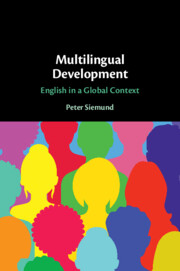Book contents
- Multilingual Development
- Multilingual Development
- Copyright page
- Epigraph
- Contents
- Figures
- Tables
- Preface
- Acknowledgements
- About the Author
- 1 Multilingualism
- 2 On Advantages and Effects of Multilingual Development
- 3 Cross-Linguistic Influence
- 4 Language Development in Multilingual Settings
- 5 Multilingual Language Policies, Identities, and Attitudes
- 6 The New Englishes in Their Multilingual Ecologies
- 7 Patterns and Limits of Multilingualism
- References
- Index
3 - Cross-Linguistic Influence
Published online by Cambridge University Press: 17 January 2023
- Multilingual Development
- Multilingual Development
- Copyright page
- Epigraph
- Contents
- Figures
- Tables
- Preface
- Acknowledgements
- About the Author
- 1 Multilingualism
- 2 On Advantages and Effects of Multilingual Development
- 3 Cross-Linguistic Influence
- 4 Language Development in Multilingual Settings
- 5 Multilingual Language Policies, Identities, and Attitudes
- 6 The New Englishes in Their Multilingual Ecologies
- 7 Patterns and Limits of Multilingualism
- References
- Index
Summary
Chapter 3 explores cross-linguistic influence and various theories thereof in multilingual settings in which more than two languages interact with one another. It is specifically interested in the direction and strength of such influence, contingent on parameters like age of onset, proficiency, L1 and L2 status, linguistic and typological proximity, recency of use, language dominance, as well as various others. It identifies cross-linguistic influence as the more encompassing concept in comparison to the traditional notion of transfer widely used in second language acquisition studies. It also discusses the relationship between cross-linguistic influence and language interdependence, as proposed in education studies. While language interdependence builds on the proficiency-enhancing qualities of multilingualism (qua metalinguistic awareness), cross-linguistic influence can be both facilitative and inhibitory, the latter manifesting itself as interference. Crucially, non-facilitative transfer only arises within a normative system. Moreover, the mechanisms underlying cross-linguistic influence show important parallels to those identified in language contact studies with its focus on contact-induced language change.
Keywords
- Type
- Chapter
- Information
- Multilingual DevelopmentEnglish in a Global Context, pp. 64 - 95Publisher: Cambridge University PressPrint publication year: 2023

